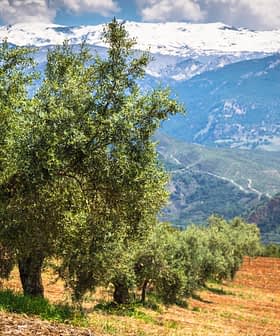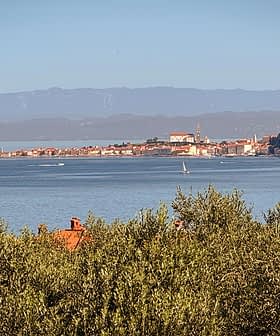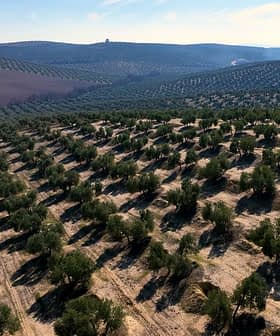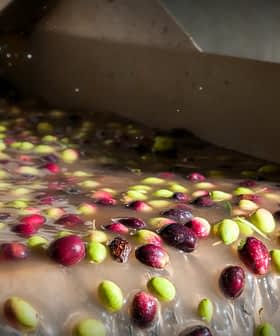Extra Virgin Olive Oil Shelf Life
Extra virgin olive oil’s renowned health benefits and organoleptic qualities degrade over time. Several factors play important roles in determining its shelf life.
 41.9K reads
41.9K readsThe article discusses how the health benefits and taste of extra virgin olive oil diminish as it ages, with factors like exposure to light and packaging playing a crucial role in its shelf life. It also emphasizes the importance of reading labels and checking the best-before date when purchasing olive oil.
Extra virgin olive oil’s renowned health benefits and organoleptic qualities degrade over time. Several factors play important roles in determining its shelf life.
The antioxidants present in extra virgin olive oil allow it to retain its high-quality even after many months of being bottled.
In some cases, the most well-made extra virgin olive oil remains ‘extra virgin’ for up to two years after being packaged.
Although, in other specific cases, degradation might occur in a matter of months. As a result, choosing the healthiest and most delicious extra virgin olive oil from the supermarket shelf requires a few basic insights.
Look at the light
Light is the number one enemy for any packaged extra virgin olive oil. The more a package of extra virgin olive oil is exposed to light, the more its content will lose its health benefits and flavor profile.
The antioxidants that keep the oil fresh will rapidly degrade, and, in just a few months of light exposure, the oil may even become rancid. This happens because light activates the chlorophyll, the green pigment that can be found in almost all plants and a large number of plant-derived products.
The antioxidants in extra virgin olive oil protect the products from degrading for long periods, but they are powerless when confronted with direct light exposure.
See Also:How to Store Extra Virgin Olive Oil at Home“Even for EVOO, polyphenols, antioxidants do not shield from photooxidation,” Maurizio Servili, a food science and technology professor at the University of Perugia, told Olive Oil Times.
“They do combat radical-substitution processes of fat substances, but the photooxidation reaction gets over that, and rancidity comes from chlorophyll,” he added.
This means that transparent bottles constantly exposed to light will not remain ‘extra virgin’ for more than just a few weeks. Unfortunately, this will be the case for many oils stored in clear bottles on supermarket shelves.
Even dark green bottles will not entirely prevent the light from reaching the product and altering its chemical profile.
“On-shelf packaging and exposure is a primary issue for extra virgin olive oils and olive oils, in general,” Servili said. “Photooxidation acts quite rapidly, and degrading occurs much faster when compared to what happens in a completely dark environment.”
Choose the best packaging
The solution to photooxidation lies in olive oil packaging.
“We still find many olive oils sold in transparent bottles, others in green bottles with or without dark layers,” Servili said. “In reality, there is no substantial difference between transparent bottles or dark green bottles.”
“Those do protect more, but only very partially,” he added. “Neither are efficient and effective, as some bottles might remain on a shelf for more than just a few weeks.”
While many olive oils are currently sold in transparent bottles, especially when the sale is expected to happen right after bottling, many producers are now choosing different kinds of packages to enhance olive oil shelf life.

Clear bottles and exposure to light reduce the shelf life of olive oil.
“The best solution is light-shielded packaging such as the common and traditional tin cans. A Tetra-Pak will also do,” said Servili, referring to the commonly-used cardboard containers coated with aluminum and other substances such as food-safe polyethylene.
Other solutions include bag-in-box packaging, which is increasingly used for liquid foods by the industry.
The product is stored in a high-quality plastic container located inside a cardboard box, preventing light exposure. Ceramic bottles, which producers and packagers are increasingly choosing for their EVOOs, also efficiently protect from light.
“Other packaging producers might use includes completely coated glass or inox steel containers, which are probably too costly,” Servili said. “Other good solutions are those bottles encapsulated within a secondary cardboard package that is still in the condition to shield all or most of the incoming light.”
Read the labels
Many olive oil producers apply clear labels on their products to inform consumers if the extra virgin olive oil is filtered or unfiltered, organic and what its polyphenol content is.
Many consumers prefer the flavors of unfiltered extra virgin olive oils, such as Olio Nuovo, which are usually cloudy and opaque due to the presence of solid residuals and water from the milling process in the oil.
See Also:The Essential Guide to Extra Virgin Olive OilHowever, this olive sediment and water in the oil affects how long the product will remain fresh. As a result, consumers more interested in a product that will preserve its health benefits and flavor profile over time should seek out filtered olive oil.
The evaluation of an extra virgin olive oil shelf life also may partially be determined by its organic or non-organic origins, which, in some cases, can impact the overall antioxidant capacity of the product.
“Organic EVOOs often come from production techniques that tend to enhance their phenolic profile,” Servili said. “In organic farming, companies, most of the time, harvest their olives early to avoid seasonal pathogens, such as the olive fruit fly.”
“In a given area and with the same olive variety being harvested, organic production could yield more polyphenols than one which is not organic-based,” he added, referring to the usually richer polyphenol and antioxidant content in early harvested and transformed olives.
However, not all producers list their products’ phenolic and antioxidant profiles. Still, polyphenols’ hold on the actual shelf life of an extra virgin olive oil might be crucial.
See Also:Tips for Selecting High-Polyphenol Olive OilsAntioxidants are among the most relevant extra virgin olive oil micronutrients. Their impact on human health is well-known as a growing amount of scientific research continues to uncover more about them.
Along with endowing extra virgin olive oils with many health benefits, its antioxidants also protect them from degrading while significantly extending shelf life.
“Antioxidants are called antioxidants because they sacrifice themselves to keep the oil fresh,” Rob McGavin, the co-founder and chairman of Boundary Bend, told Olive Oil Times. “When the oil comes under pressure from light, heat and oxygen, the antioxidants just keep sacrificing themselves.”
“How long they take to disappear depends on the oil’s starting point and storage conditions,” he added. “So if you start with 1,200 parts per million, you’re a long way in front. You’ve got a lot of antioxidants there to protect the oil for a lot longer.”
Consumers looking for extra virgin olive oils of European origin might also be helped by the certifications on their labels. Many producers obtain E.U. official certification, such as Protected Designation of Origin (PDO), which confirms the quality of a product and its traceability.
Such high quality will more often than not include an above-average phenolic content while also prohibiting the presence of lower quality olive oils in the final product.
Best-before date and discounts
Unfortunately, not all products exposed on a shelf make it easy for consumers to understand when olive oils were produced. For example, some producers may use the transformation date (they likely say the pressing date), bottling date or best-before date, all of which will significantly differ.
If the best-before date is the only one available, it is best to select extra virgin olive oils that are as far from this date as possible.
“Most olive oils are marketed with a best-before indication equal to 18 months from packaging,” Servili said. “If the consumer finds an extra virgin olive oil close to that date, let’s say up to five months earlier, then they could probably try to find a fresher bottle.”
“Many in food shops do exactly the same with other products, such as milk, when they reach beyond the first line of containers to get the fresher product,” he added.
See Also:Cooking With Extra Virgin Olive OilHowever, the best indicator of extra virgin olive oil freshness is the harvest date, when the clock begins ticking for the degradation of the olives and hence the oil. Therefore, consumers should not select oils with a harvest date more than 18 months old (some would argue 12 months to 24 months).
For lower quality products, such as virgin olive oils, degradation takes place much more quickly.
“Even within the extra virgin olive oil category, there are differences. It depends on the olive oil contents and the composition of the fatty acids,” Servili said.
Special offers from supermarkets often allow consumers to purchase products that are normally not within their food budget range. These offers occasionally include extra virgin olive oils marketed by renowned brands. Still, they might require additional considerations.
Servili warns that these discounted offers often include lower-quality EVOOs or ones beyond their best-before date. Therefore, consumers should carefully read the label of any discounted oil to see if it is worth the saving.
Where to buy fresh extra virgin olive oil
Specialty food shops that deal directly with producers or importers are the best place to start when looking for fresh extra virgin olive oil.
The retail finder on the Official Guide to the World’s Best Olive Oils makes it easy to find award-winning extra virgin olive oils near you or through online retailers.
Share this article









